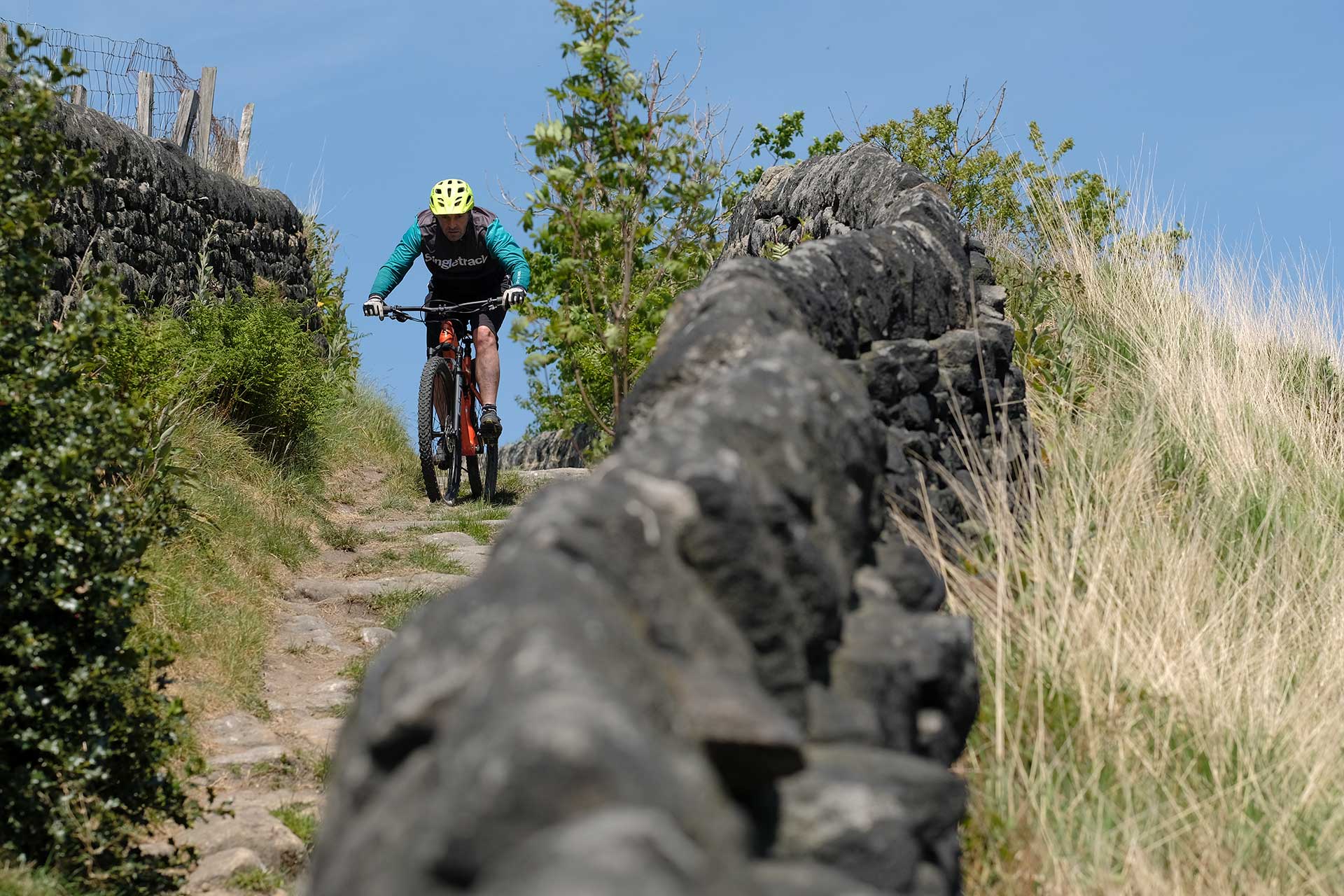
One of the more interesting aspects of reviewing the new crop of XC bikes is that the press packs manufacturers send out often start with an old photo of what the bike looked like 20 years or so ago. It might not surprise you to know that the first edition of the Cannondale Scalpel back in 2001, as with most bikes back then, looks more like an instrument of torture than something you’d ride for fun, and up until a few years ago you could argue that remained the case for most bikes in this category. Let’s be honest, they were for weirdos with shaved legs and 30inch waists who like riding fast around fields and not much else. However, the new 2020 Scalpel promises to break those moulds.
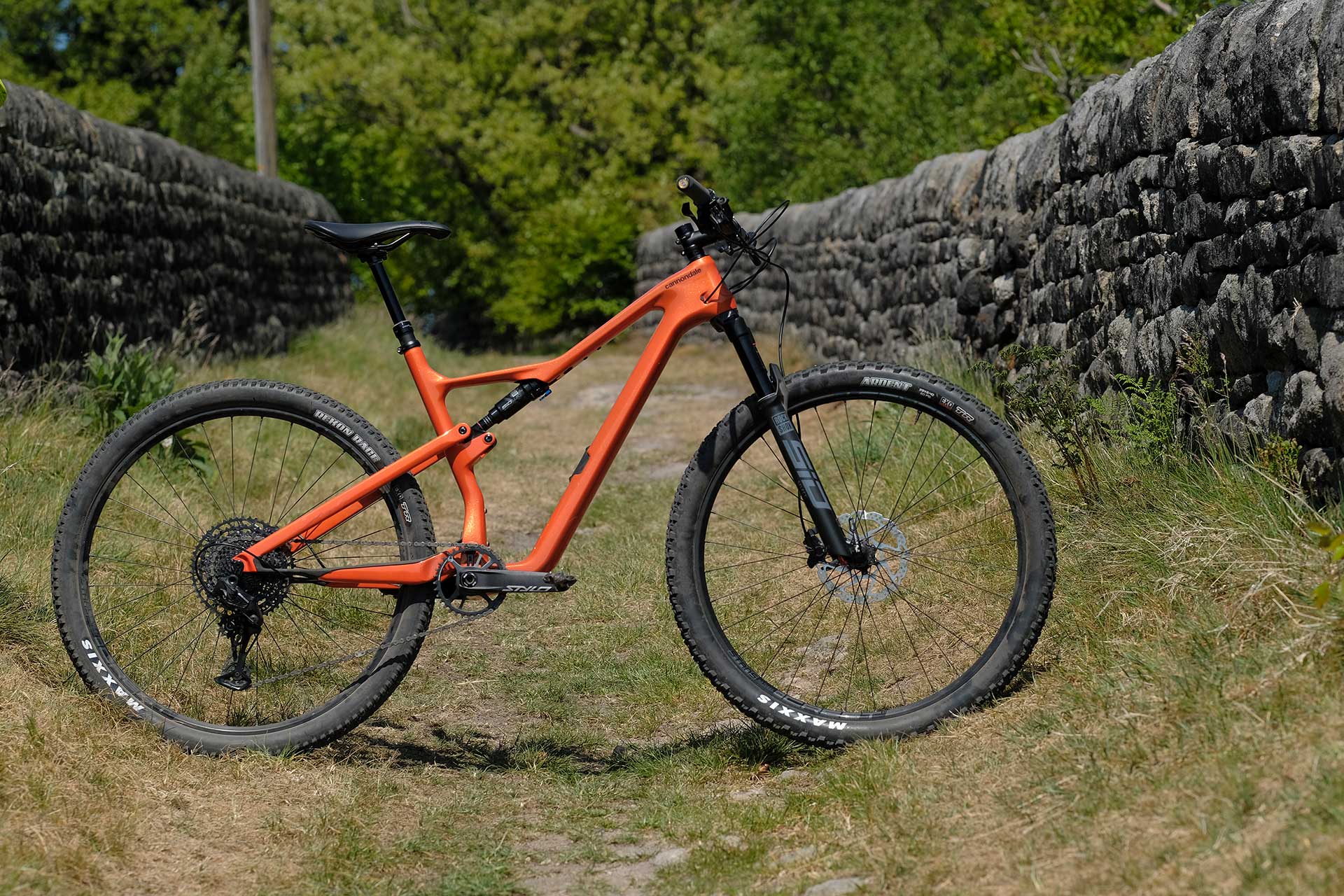
Thankfully things have moved on, even since the last Scalpel launched in 2017 and the past couple of years have seen a number of bikes released that seek to combine the traditional climbing and all-out speed characteristics of XC bikes with trail bike descending capabilities which make even the most risk averse look like they know what they’re doing (to the relief of many St John Ambulance volunteers no doubt). The Scalpel was one of the first bikes in the XC category to adopt progressive trail characteristics, and was the first (maybe, don’t quote me) to coin the phrase XXC. Inevitably, the 2020 Scalpel takes this another step further, being – wait for it – longer, slacker and lower than its predecessor, and many of its compatriots in the XC/trail category.
Scalpel 2020 – The Bike
The 2020 Scalpel has two models, the race-oriented original, with 100mm travel front and rear and the trademark Lefty fork, and the SE, targeted at marathon and endurance riders, with 120mm travel at both ends, slacker geometry and more trail oriented features including the Rockshox SID Select+ fork, shorter stem, wider tyres and the all-important dropper post.
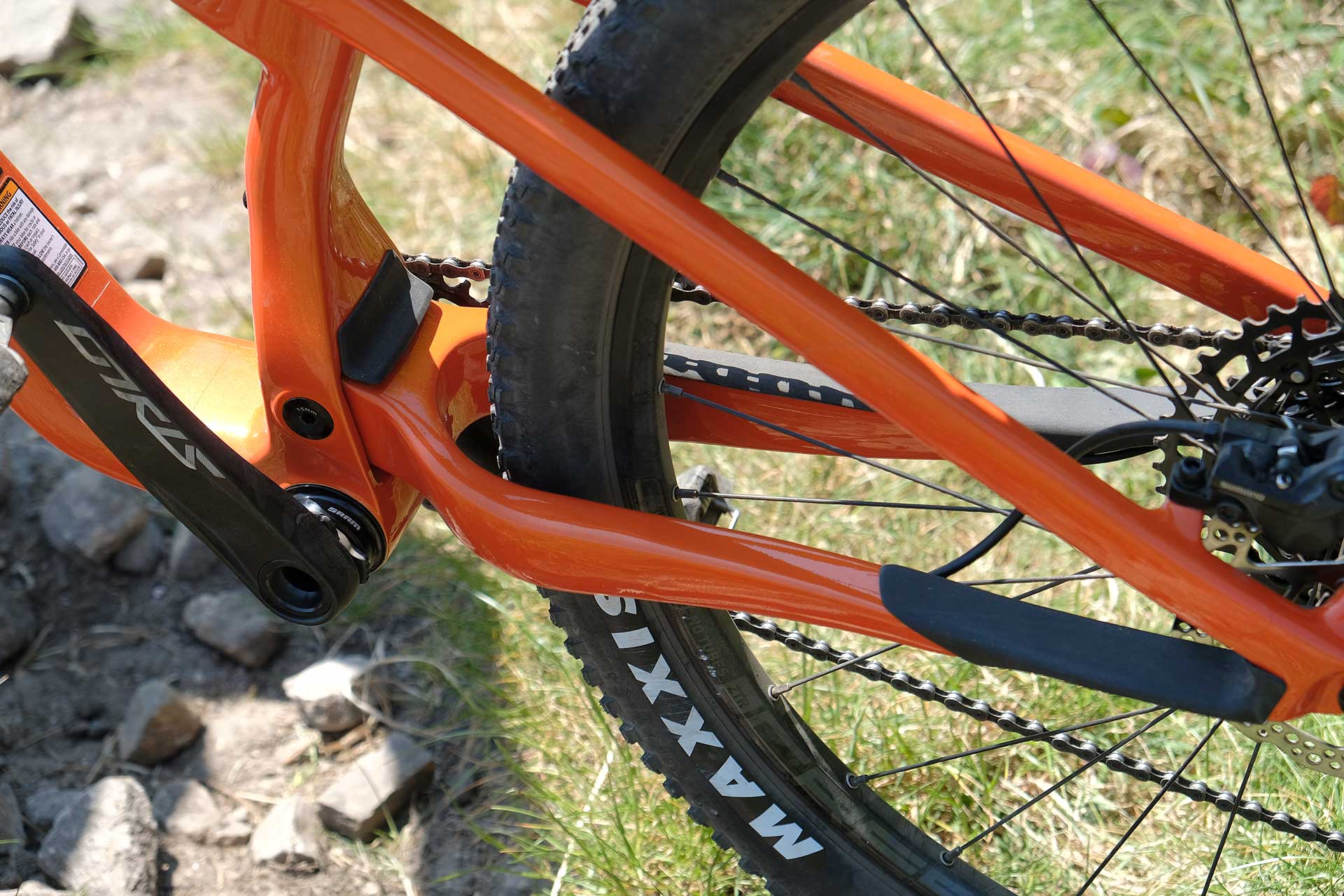
The SE comes in three flavours, the higher spec SE 1 with HollowGram carbon wheels and the new XT 12 speed groupset, retailing at a very respectable £4200. The SE 2 on test here has the same frame and fork specs, and presents an even more respectably priced option at £3200, with a SRAM Eagle SX/Stylo drive train, Shimano MT500 brakes and Stans Crest rims built on Deore hubs. The Women’s SE completes the range, mirroring the spec of the SE 2, but with slightly tweaked sizes and geometry for female riders.
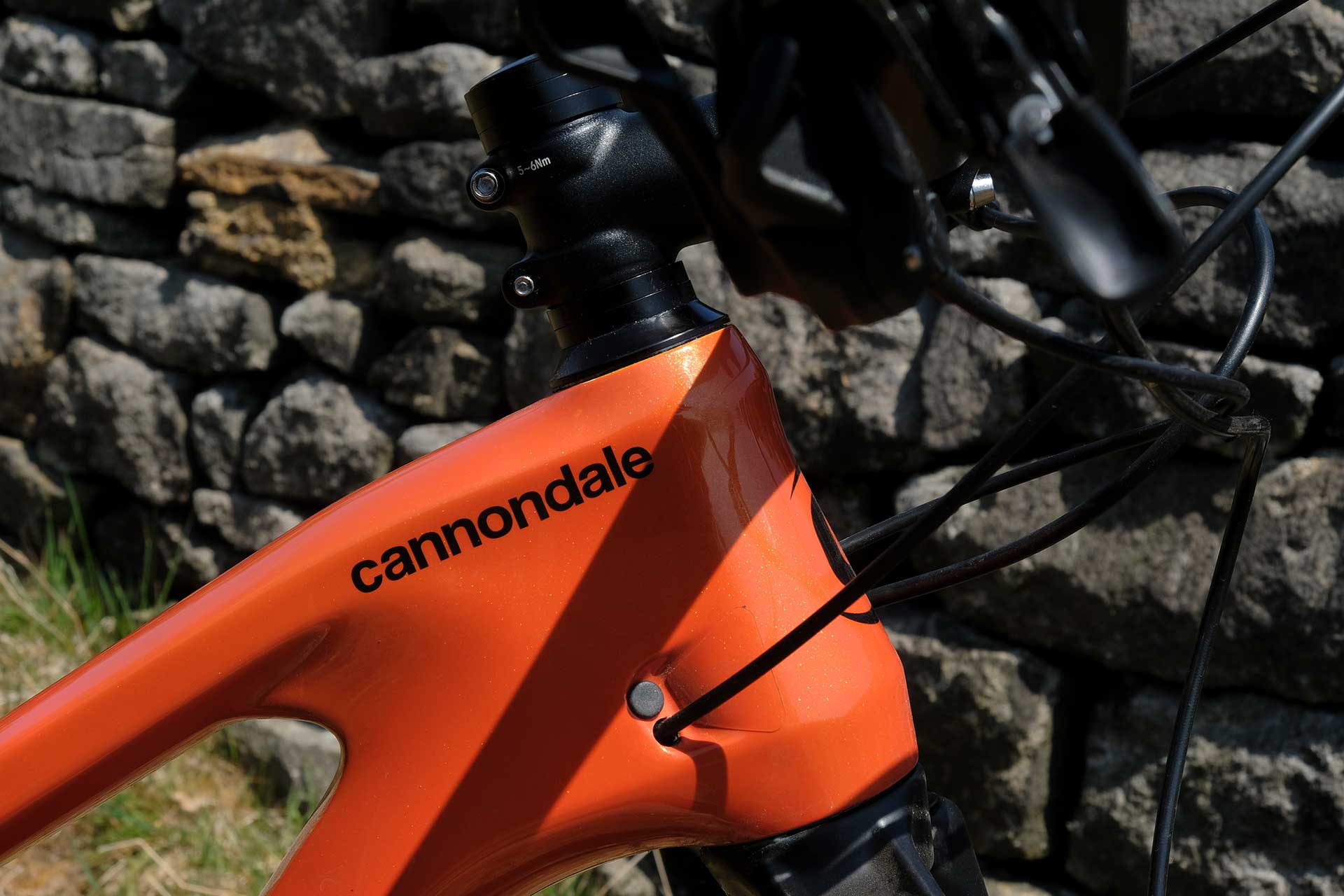
The Scalpel frame has undergone a complete overhaul for 2020. Whilst it looks much like its predecessor, there’s not much that hasn’t been updated. The thick and box-like tubes, combined with aggressive looking angles give this bike the look of something designed for something much more than XC, and the 3 inch wide down tube in particular will reassure the rider that it can be abused and pushed to the limits.
The aggressively angular aesthetic is balanced by some very sleek and clever linkage design, which results in the bolts and links which hold the bike together being almost hidden from view. The shock inserts into the underside of the top tube and similarly the chainstay inserts into the rear of the seat tube, resulting in a very clean and uncluttered external appearance. Although I do wonder whether these internal linkage spaces will be the perfect place for mud and grime to accumulate. It may look good but it might require a little more effort to maintain and keep clean.
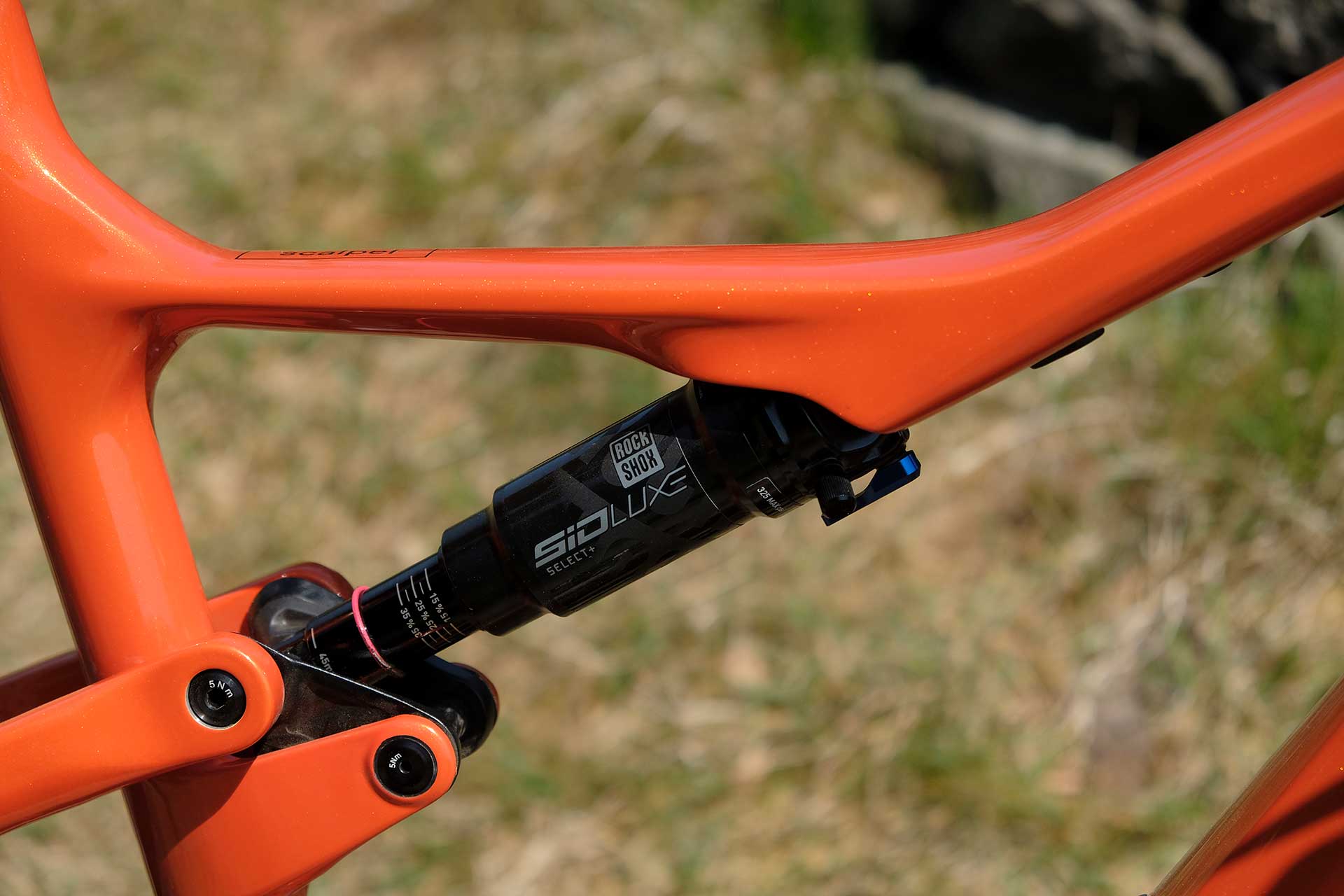
The burly tubes and aggressive aesthetic also suggest that weight may have been sacrificed in favour of sturdiness. Any worries on this front can be discounted however, as Cannondale have managed to keep the frame weight down to a very impressive 1910g (claimed), which according to the marketing blurb is the best in class compared to XC offerings from other manufacturers. Unfortunately, however on the SE 2, the overall weight suffers from the spec of the rest of the bike, which is understandable at a retail price of £3200, coming in at a roughly measured 13(ish)kg on the bathroom scales. I don’t know the overall weight of the SE 1, but the higher spec components and carbon wheels and finishing kit suggest the extra £1000 might be worth every penny.

The 120mm of rear suspension is provided by Cannondale’s patented FlexPivot system, the major feature of which is the almost wafer thin tapered chainstay, providing an extra bit of flex in place of a Horst Link, while ostensably doing the same job and saving upwards of 200g on the frame weight. The SIDLuxe Select+ shock favours the XC side of the spectrum, providing binary open and locked options, where locked really does mean locked, and the XC theme is maintained at the front, with the SID Select fork.
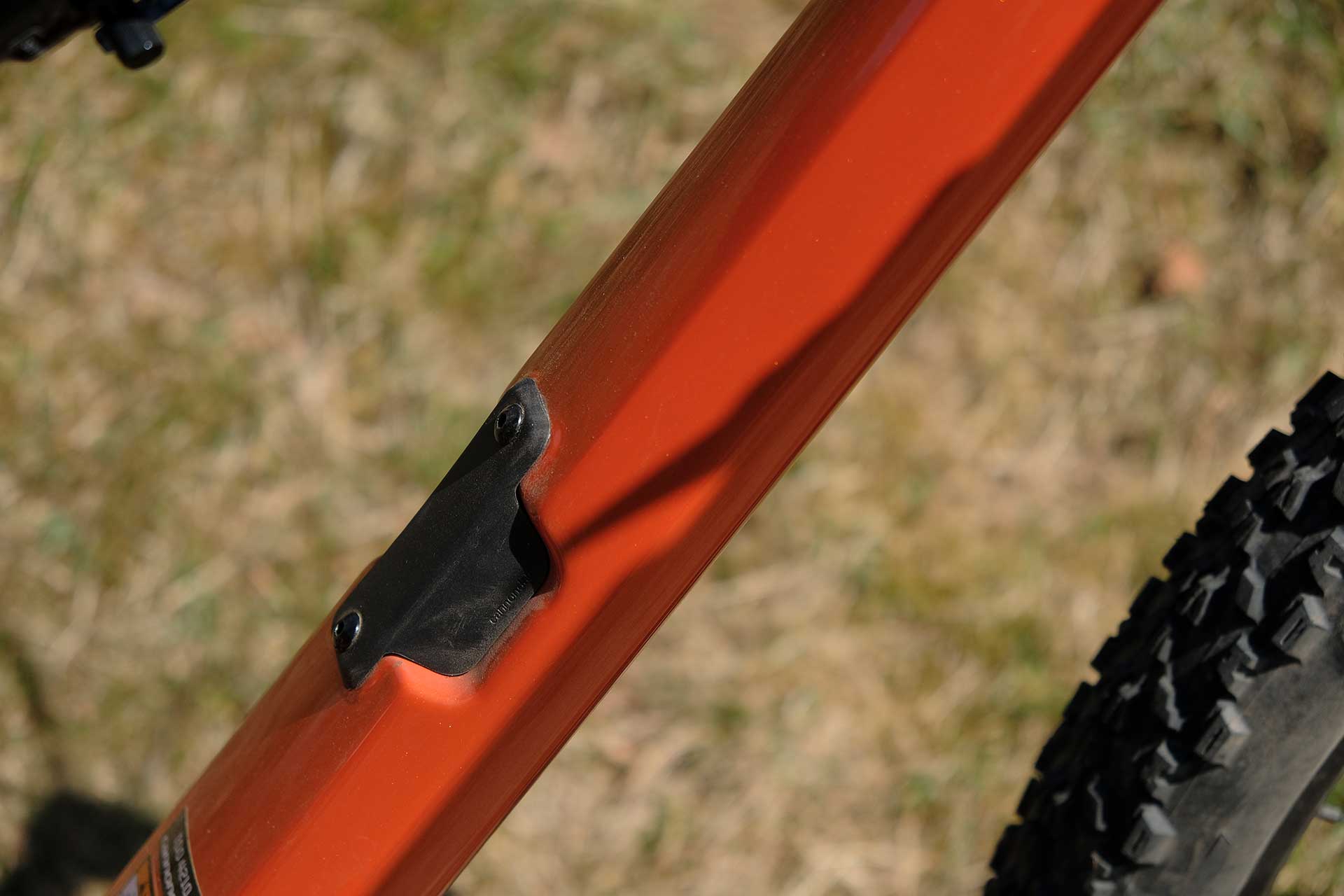
Other features of note include the STASH Kit, which includes a Fabric mini tool and Dynaplug tubeless kit which attaches to downtube water bottle holder. A small detail, but something that’s a nice touch at this price point. The SE 1 and Women’s SE models also come with an integrated wheel sensor which can be used in conjuction with Cannondale’s mobile app, but unfortunately, and unsurprisingly, isn’t featured on the lower spec SE 2.
Cannondale 2020 Scalpel – The Ride
First a cautionary piece of advice. When you take delivery of a new bike, as well as assembling it properly, make sure you inspect it thoroughly and know the various features and details. It could save you a lot of grief and anxiety. In this case I’m talking about the small but useful feature of the ‘speed release rear axle’. Putting aside the fact that Cannondale seem to have gone full circle and reinvented quick release (it’ll never catch on), it would have been useful if I’d known in advance that the gap in the frame where the bolt through axle inserts was supposed to be there, rather than looking like a bit of the frame had snapped off. It would have saved me a walk home, and the worry of having to tell Cannondale that I’d trashed their brand new bike on its first ride.
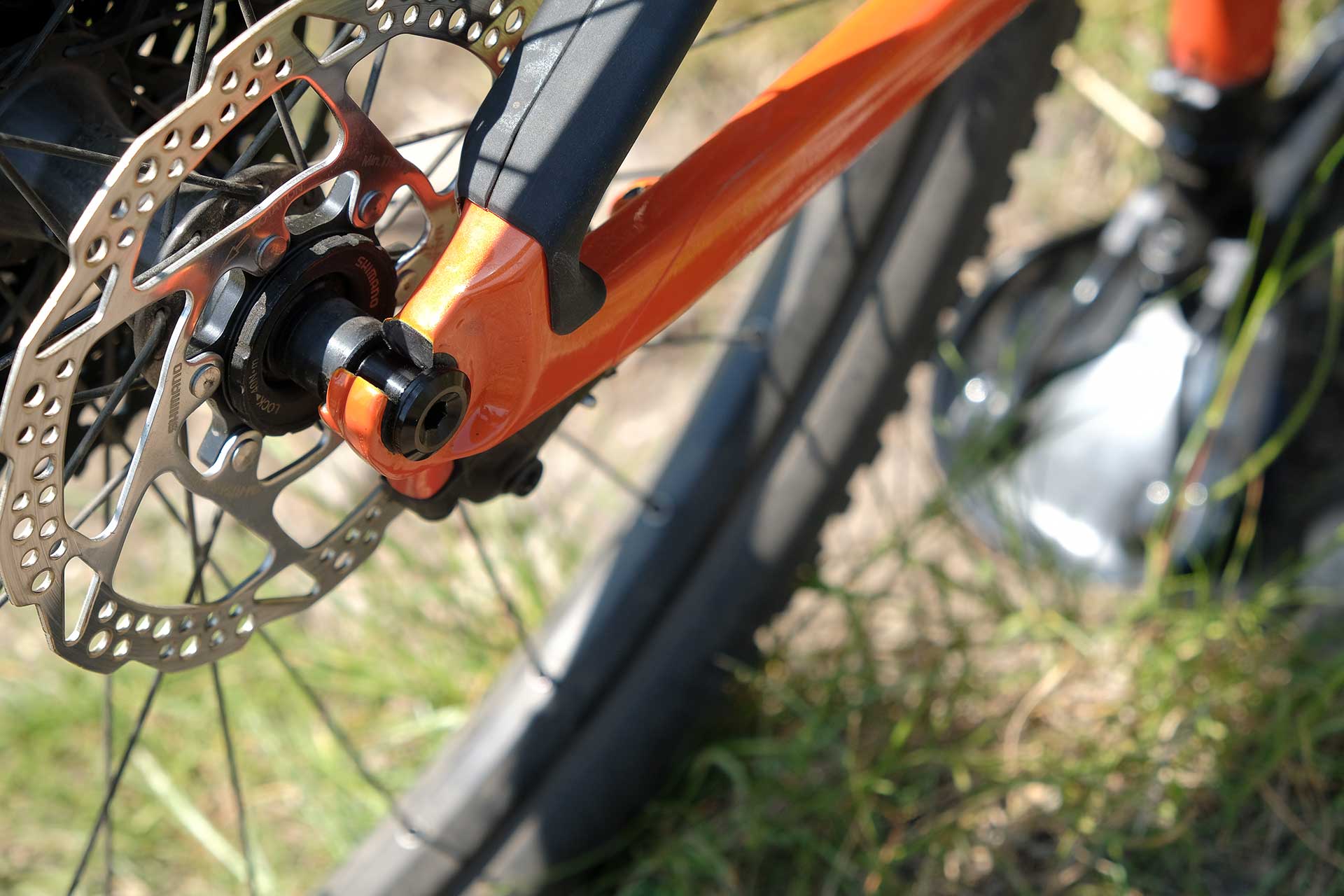
We’ve only had the Scalpel SE2 for a week so testing has been limited to thrashing it around the Calder Valley in conditions which, thanks to the lockdown drought, are more like Arizona than a typical UK spring time. That time has been enough though to come to some fairly solid first impressions. The first is that in this spec, the 2020 Scalpel feels more like a trail bike that you can ride all day than something you’d use for racing, mainly due to the resultant weight of components at the lower end of the spectrum. That being said, it does provide an excellent platform to upgrade as effort has clearly gone into keeping the spec of the frame and forks high.
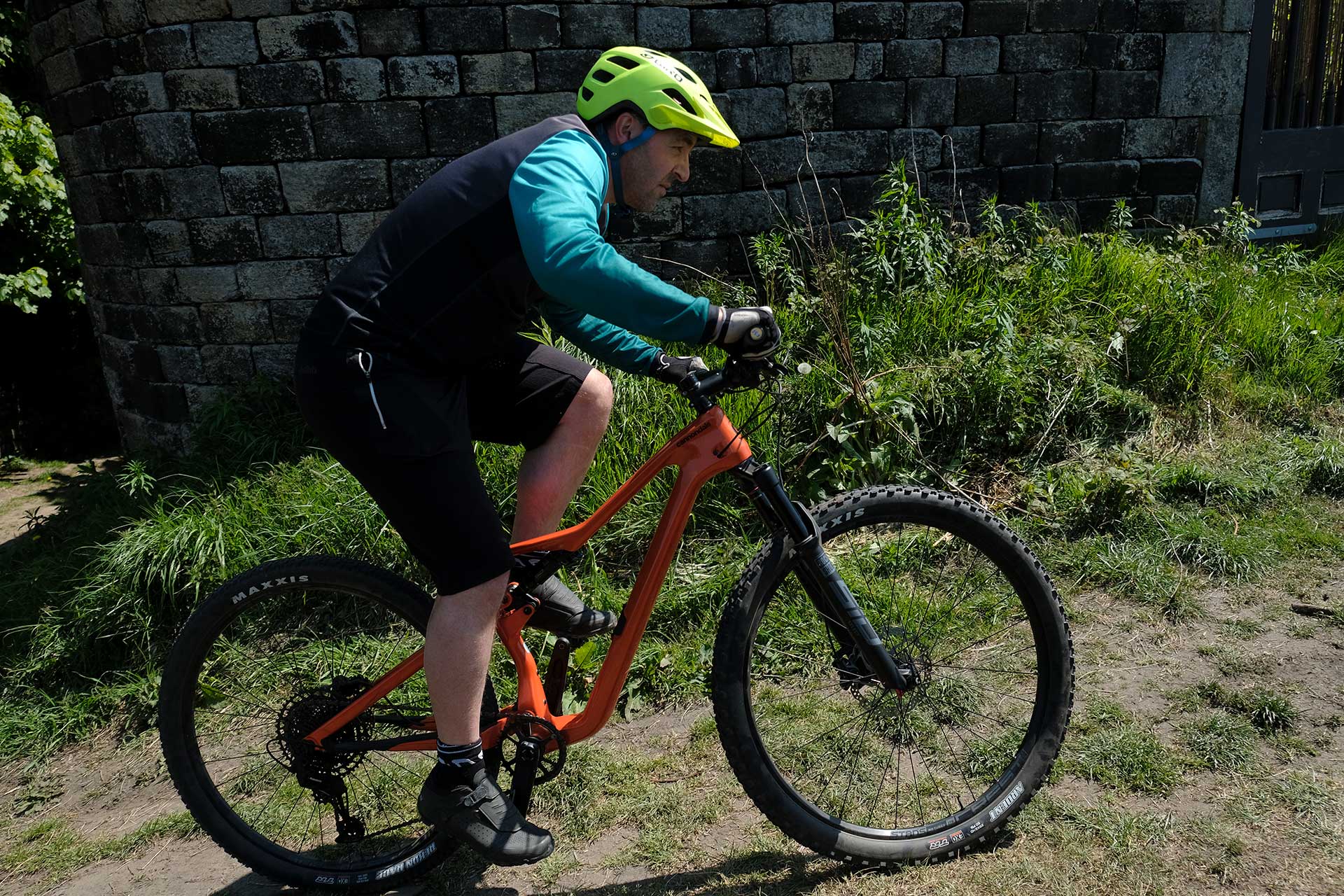
Despite the weight, on climbs the Scalpel still performs well, thanks in no small part to the shock lockout, and the stiff pedalling platform provided by the thick downtube. Many XC bikes of this nature have lockouts but don’t need them, but I’m not sure this can be said of the Scalpel. The bike tightens up nicely when you put the power down at higher speeds, which is when it’s most needed, but at slower speeds there is evidence of some pedal bob which while small requires the lockout to be engaged. When it is though, the impact is stark, and provides a pedalling base equivalent to some racy hardtails I’ve ridden. It’s not often I reach for the lockout on climbs but this is so effective I found myself engaging it as soon as the trail pointed uphill again, and the flick switch on the SIDLuxe shock enables this very easily.
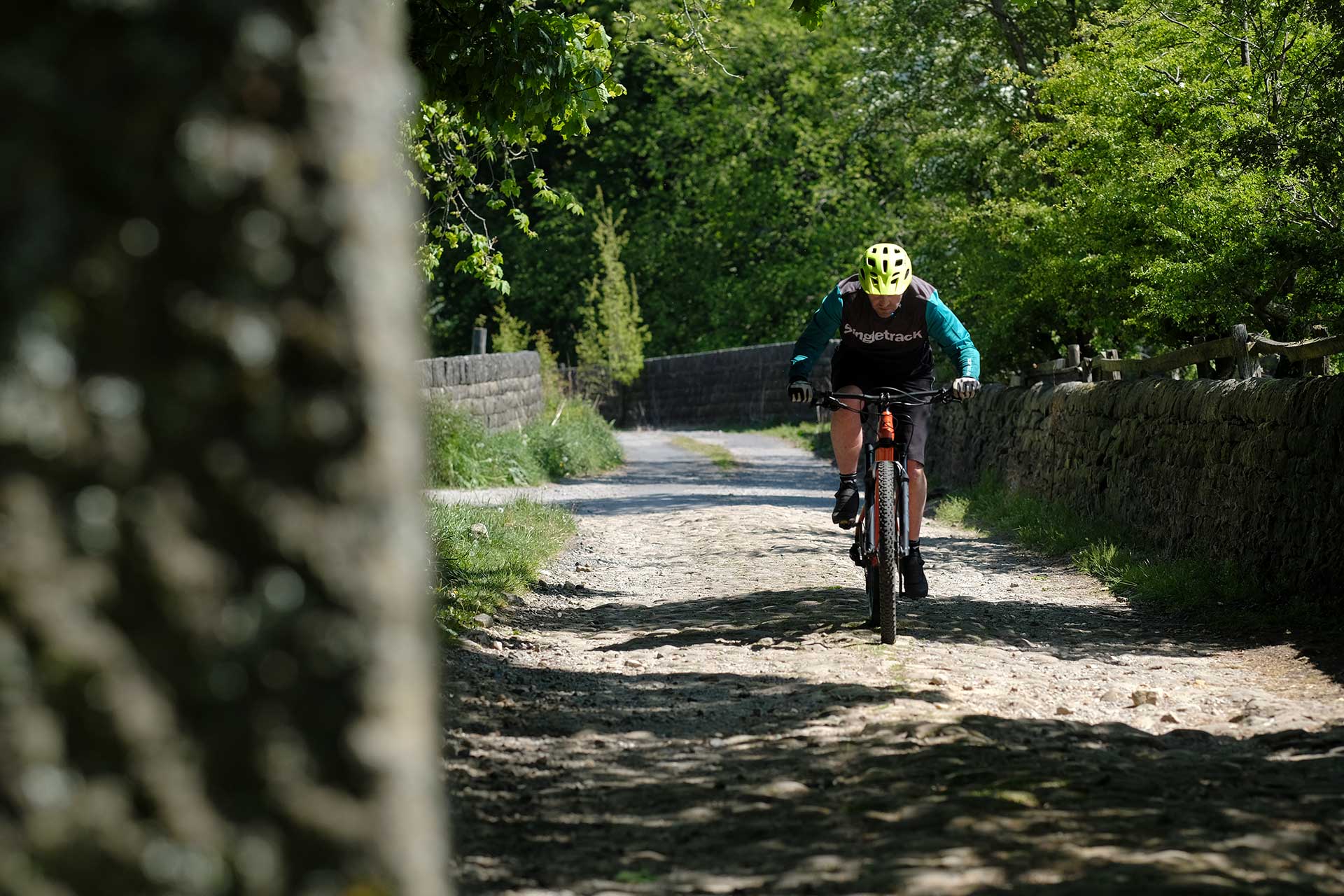
When the trail turns downhill, the most apparent quality is one of agility and steering which is as precise as some much steeper angled bikes I’ve ridden, and possibly a result of the combination of the slightly shorter frame (250mm reach in L size) and longer 80mm stem. Having ridden mostly super-slack trail bikes recently which prefer to bulldoze terrain, I’d almost forgotten what it was like to be able to instinctively weave in and out of obstacles and negotiate corners with almost no effort.

When the terrain becomes too rough for finesse, the suspension and SID Select fork begin show their XC nature. With no options to refine the shock and fork compressions other setting the sag level, the suspension is fairly easy to setup. At 30% sag front and rear, the suspension shows good small bump performance and keeps the bike well planted. On really rough stuff however you run out of travel fairly quickly, and more aggressive riders may want to firm things up with higher shock pressures at the price of losing some comfort and perfermance on easier terrain.
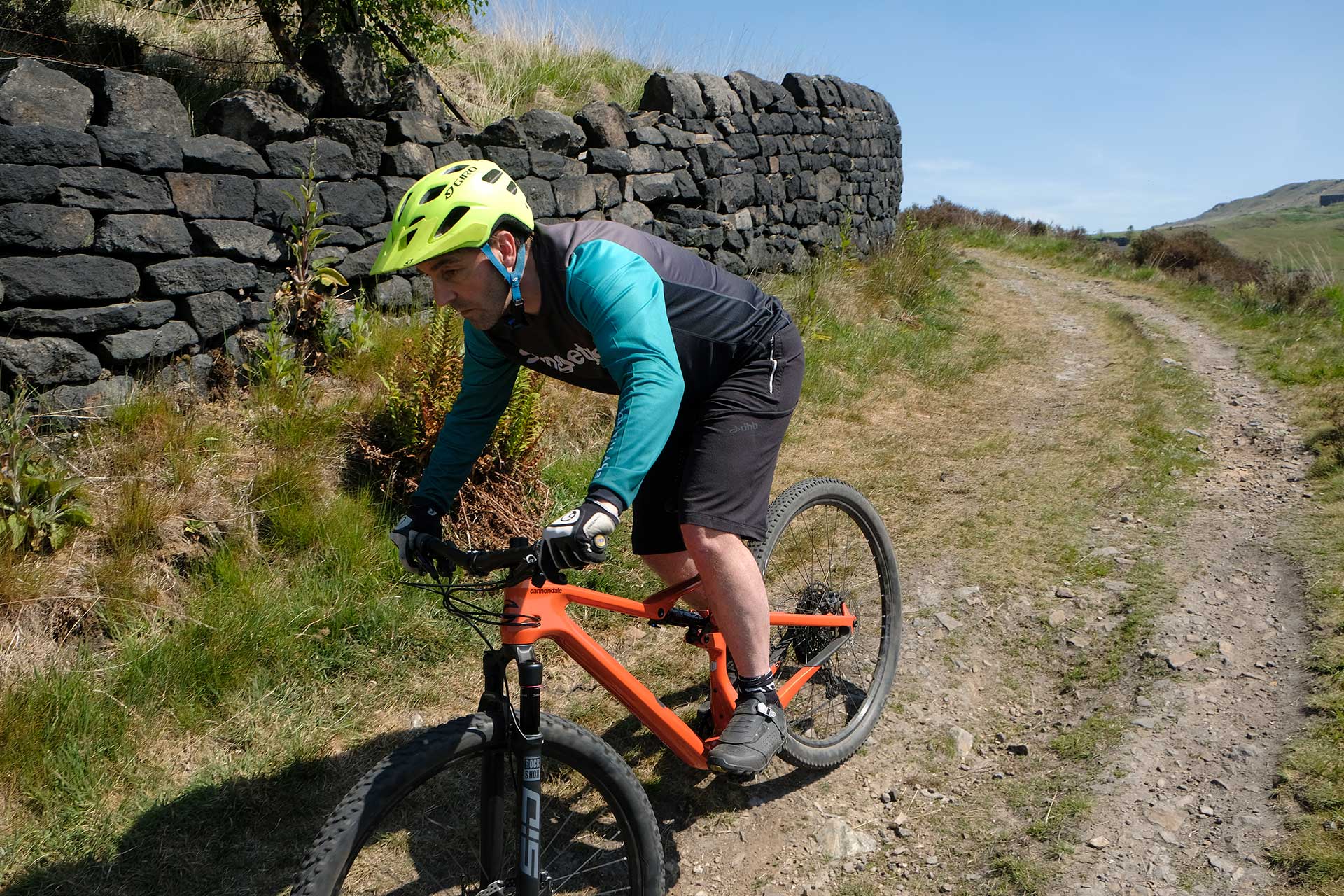
I’m relieved to be able to report that the MT500 brakes are more than adequate for the job. I’ve ridden too many bikes at this end of the price spectrum which compromise on this critical component. I do hope however that they last a bit longer than the lower spec Shimano brakes which I’ve had to throw out in the past. This, along with the Deore hubs have me wondering about durability, but obviously a longer test would be required to probe these aspects. One minor gripe was the chain retainer. I’m not sure if I had it setup wrong but it generated a lot of noise, to the point where I just took it off.
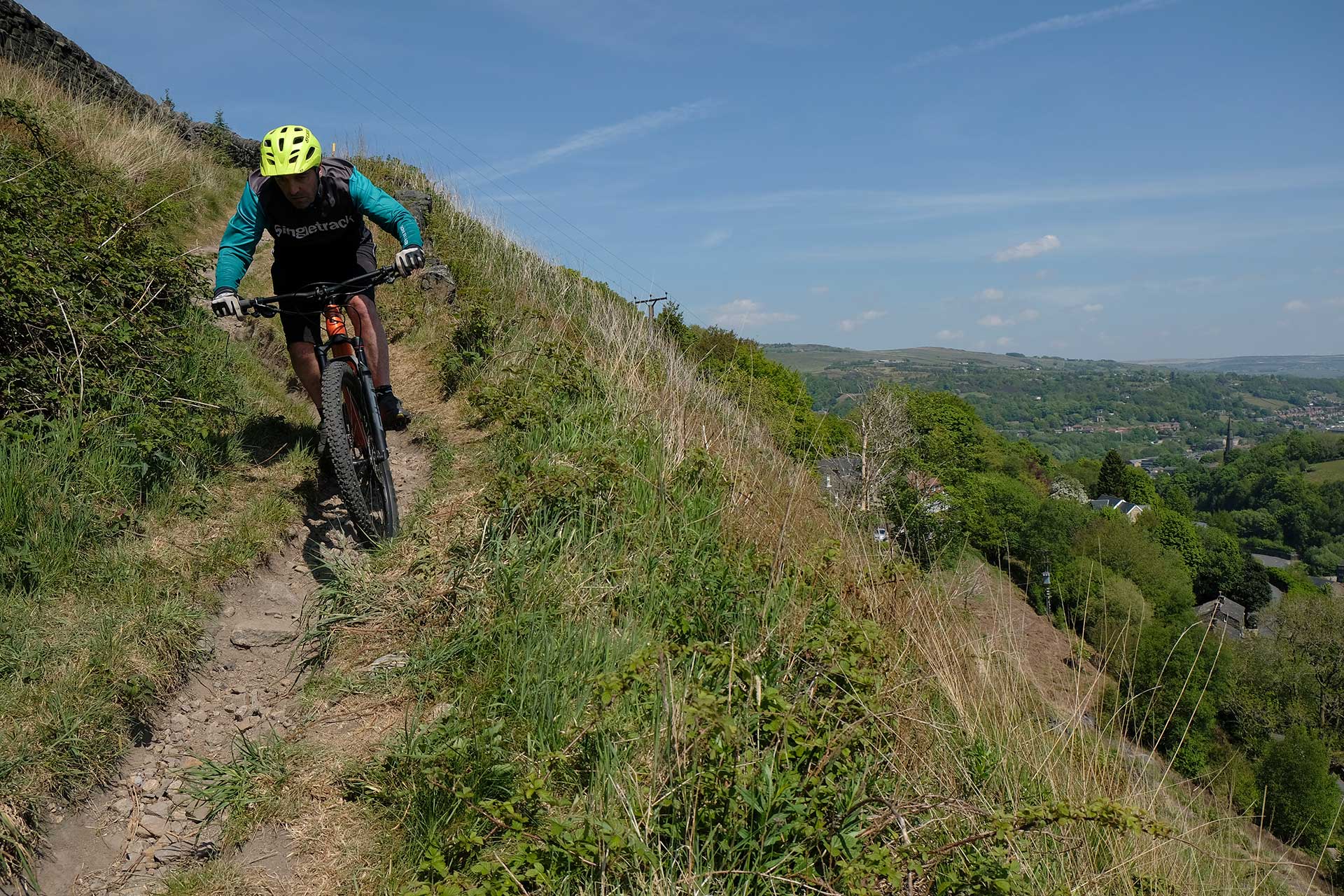
Three things we liked:
- The speed release rear axle. Once I realised it the gap in the dropout was a feature it came in quite useful.
- Agility on tight and twisting singletrack and precise steering.
- The shock lockout is very efficient and turns the bike into a hardtail which is a great boost on long draggy climbs
Three things we would improve:
- The bottom bracket height results in too many pedal strikes on rutted or uneven terrain.
- The chain retainer is almost redundant and doesn’t add much.
- A more aggressive fork would help on rough terrain and add to the rest of the bike’s trail riding abilities.
Overall
It would be easy to conclude from trends in cross country bike development over the past couple of years that there’s something of an arms race going on in terms of slacker and longer geometry, increasing travel and downhill performance. The 2020 Scalpel doesn’t buck this trend, but it maintains more of its XC heritage compared to some of its competitors. It may be more forgiving thanks to its updated geometry and trail characteristics, but it hasn’t forgotten the need for agility and manoeuvrability, and this is potentially its greatest strength.
The SE 2 represents excellent value for money for those looking for a machine with trail characteristics on a bike that can be ridden over longer distances, and those who want to dip a toe into racing or marathon events. For the more serious endurance rider, the weight of the SE 2 lets it down, and the higher spec SE 1 model, with carbon wheels and XT 12 speed groupset, will be a better option if you can stretch to the extra expenditure (around £1000). Irrespective of the weight, the Scalpel SE is a solid hybrid of XC and trail capabilities, and if you’re riding at that end of the spectrum, you’d be hard pushed to find many faults, especially in this price bracket.
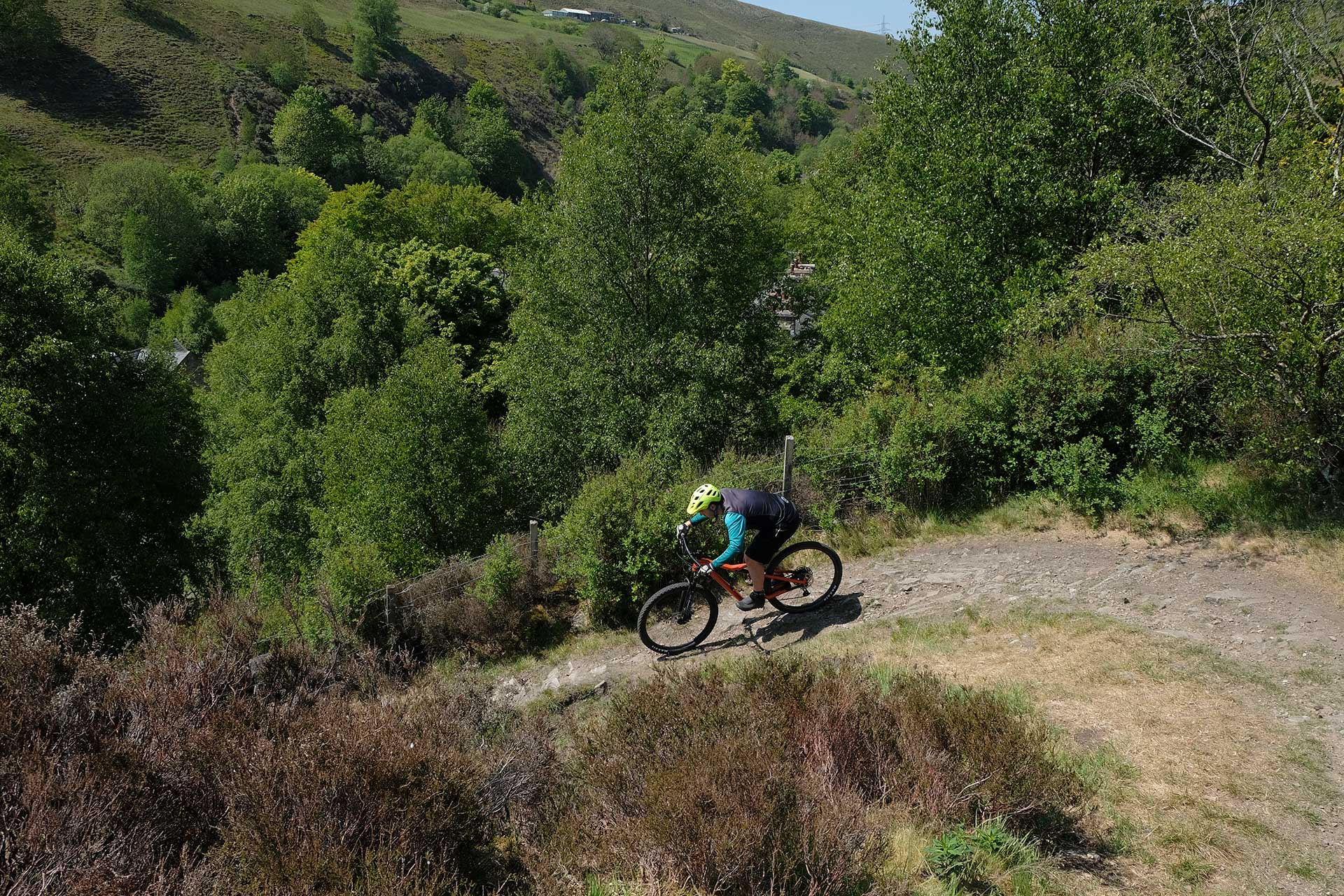
2020 Cannondale Scalpel SE2
- Frame // Cannondale Scalpel 2020 frame. All-new, 120mm travel, BallisTec Carbon, Proportional Response Tuned, FlexPivot Chainstay, PF30-83, Tapered Headtub, Speed Release 12mm thru axle, Ai Offset, Stash compatible
- Fork // RockShox SID Select, 120mm, Debonair, 15x110mm thru-axle, tapered steerer, 44mm offset
- Shock // Rockshox SIDLuxe Select+, 2-pos mode adjust, adjustable rebound
- Hubs // Shimano Deore 15×110(F), 12×148(R)
- Rims // Stans NoTubes Crest S1 32h
- Tyres // (F) Maxxis Ardent Race 29×2.35, (R) Maxxis Rekon Race 29×2.25
- Chainset // Truvativ Stylo 6K DUB, 34T, Ai offset
- Bottom Bracket // SRAM DUB PF30 MTB83
- Rear Mech // SRAM SX Eagle
- Shifters // SRAM SX Eagle 12 speed
- Cassette // SRAM PG-1230, NX Eagle 11-50t 12 speed
- Brakes // Shimano MTB500 180/160mm rotors
- Stem // Cannondale 3 6061 Alloy, 31.8, 7deg
- Bars // Cannondale Riser, 6061 Alloy, 31.8mm, 760mm
- Grips // ESI Silicone 32mm
- Seatpost // Cannondale DownLow Dropper, internal routing 125mm
- Saddle // Fabric Scoop Radius Sport
- Size Tested // L
- Sizes available // S, M, L, XL
- Weight // approx 13kg
Price £3200
The bike should be with shops very soon. Contact CSG for more info.






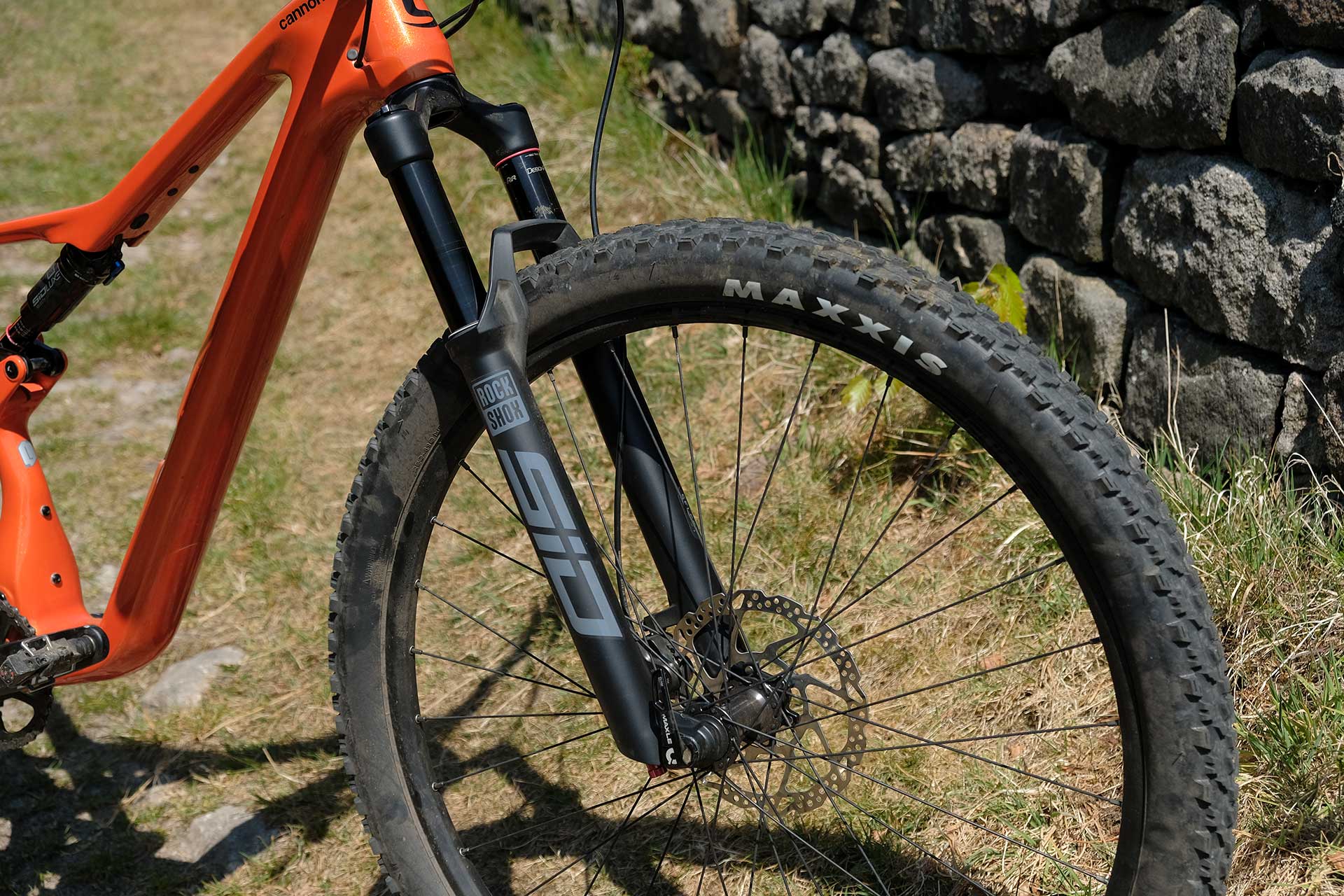


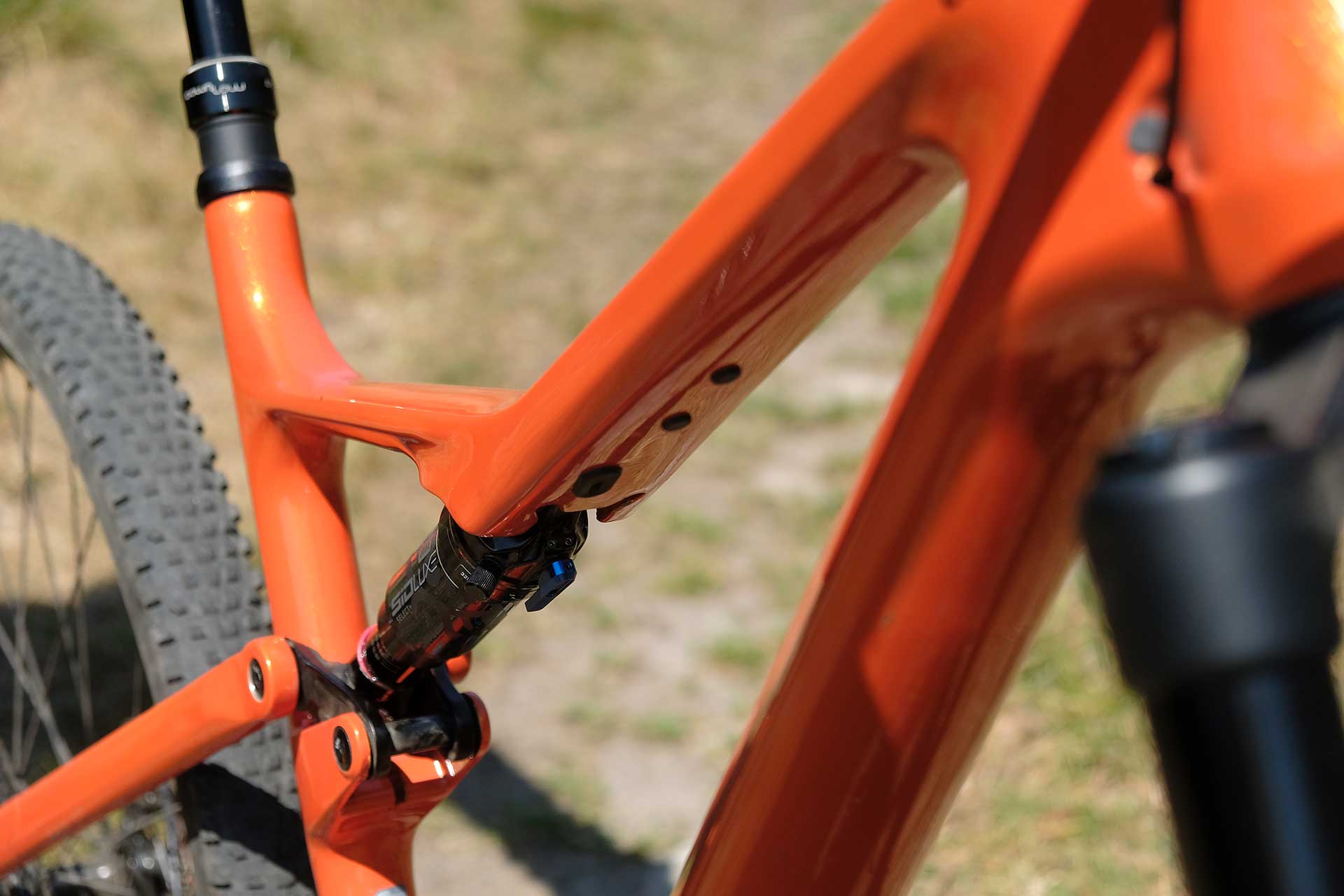

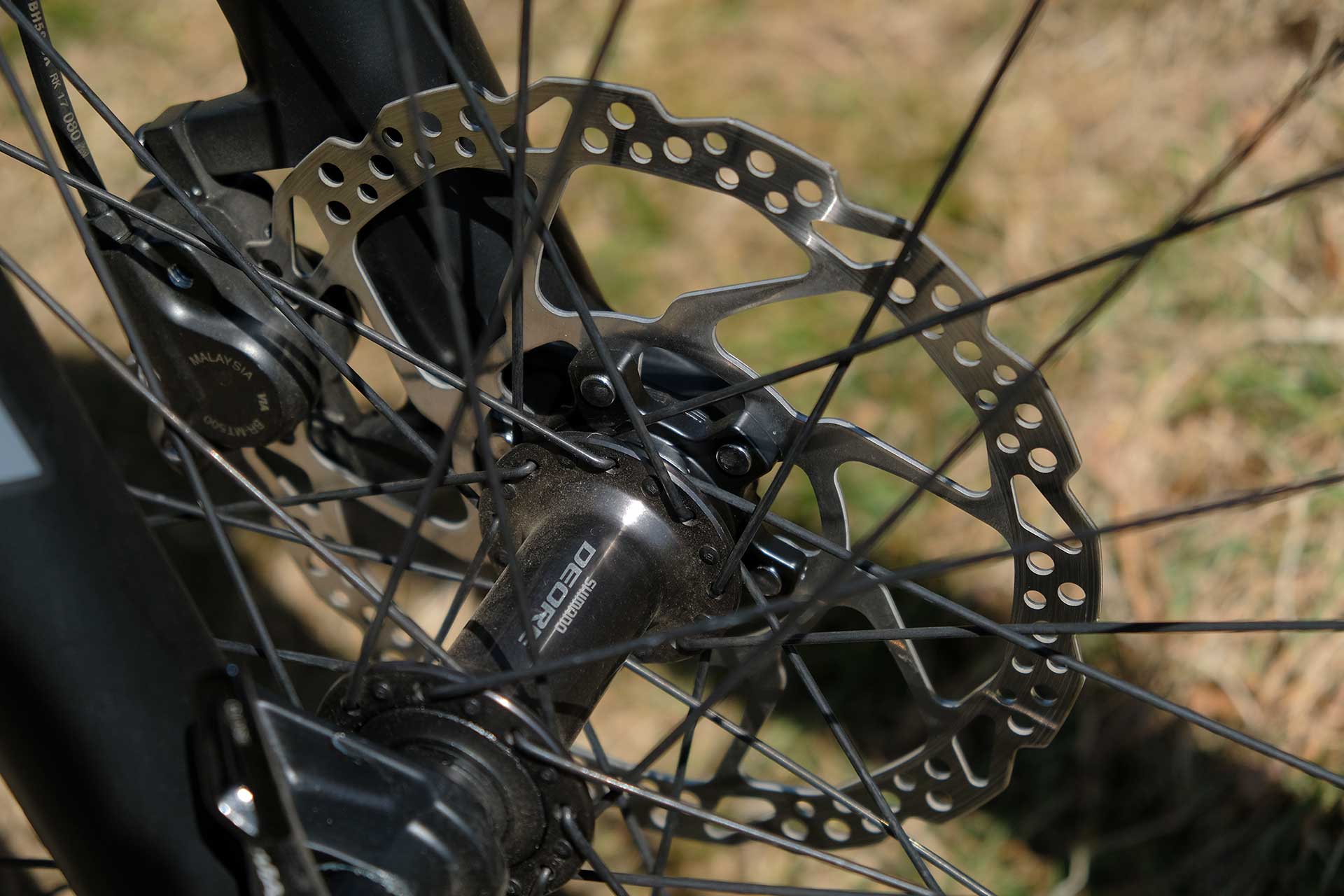
Isn’t this the 2021 model year?
These look like great bikes but most of the range is let down by boring colours – Cannondale has become middle aged and staid – its style cues come from M&S these days.
It is the 2021 model year, but every time I talk about 2021, I get people complaining that this year isn’t even half over yet and considering that the bikes are out now, I don’t see why they can’t be 2020 bikes.
Mind you, we’re the contrary magazine that puts ‘June Issue’ on our issue that’s on sale in June 🙂
Horses for courses obviously but the sparkly orange paint job on this is something to see when the sun catches it. I wouldn’t call it boring that’s for sure.
Not contrary Chipps, accurate!
…you should have worn your matching outfit, Daz.
Proprietary wheel standard is a pain. I had a ‘142+’ on a Specialized Epic. It was possible to get a standard wheel in it, but that would mess up the chain line. The wheel wouldn’t fit anything else either. They were otherwise nice carbon wheels – in the end I moved them into a boost frame with a variety of spacers, end caps and bodgery.
I like the frame design otherwise, and it’s in the same area as the Epic – I’d just prefer something more standard. It seems ironic that they have gone for a flex chainstay to remove a pivot, but then at the other end gone with the vastly over complicated engineering solution of the Lefty.